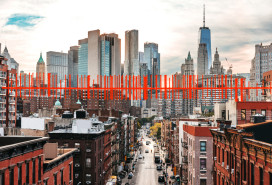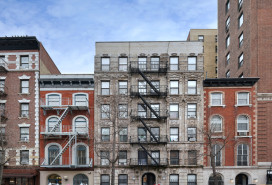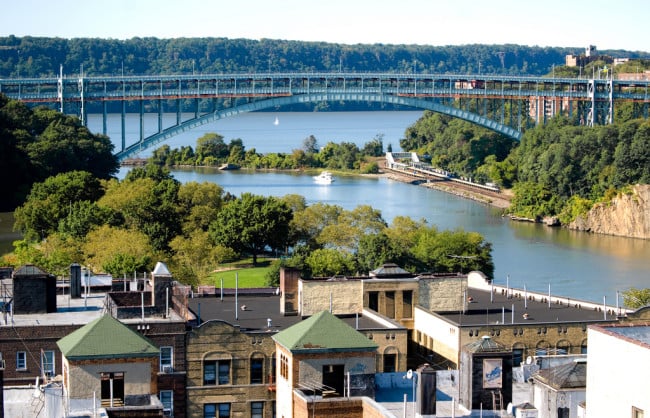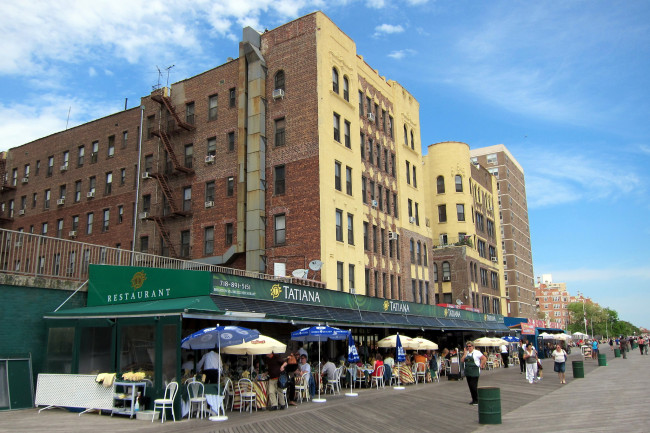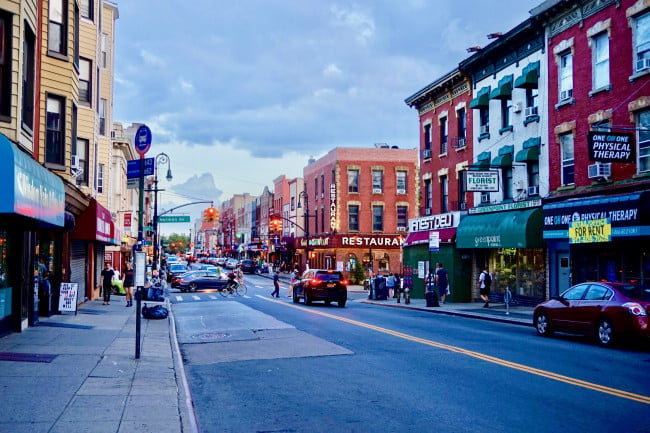Ridgewood, Queens: The insider's guide to living there
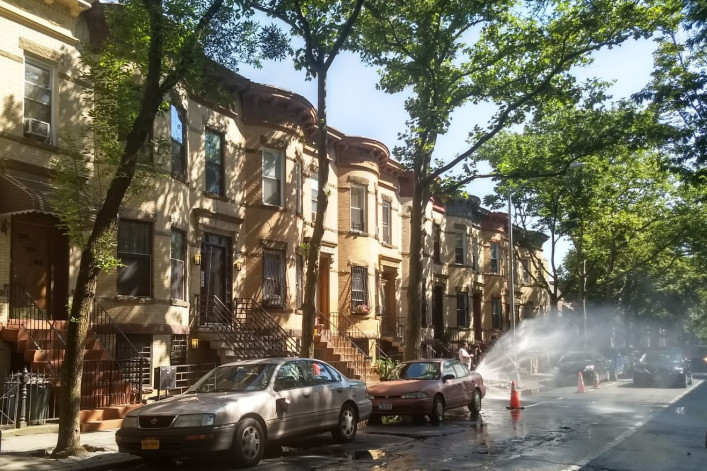
Many of Ridgewood's side streets are lined with single-family homes and almost all have stoops. These same stoops brought the Queens neighborhood together during the pandemic.
Marjorie Cohen
Paul Kerzner has lived on the same street in Ridgewood for his entire life, all 68 years of it. He did move once, but that was just down the block and on the same side of the street” He loves to tell visitors about his neighborhood—its past, present, and its future—which is one of the reasons people call him the mayor of Ridgewood.
When asked to describe his neighborhood, without missing a beat, Kerzner says, “You come here, you stay here. Why go anywhere else?”
Ridgewood hasn’t had the kind of exodus that other parts of the city have had during the pandemic. “Maybe it’s because we have yards and don’t feel as confined as people feel in other places,” says Angie Dykshorn, who moved from the East Village to Ridgewood in 2015.
Many of the neighborhood’s side streets are lined with single-family homes and almost all have stoops. A few decades ago, Friday night was clean-your-stoop time, especially for the German families, and that’s when neighbors socialized on their stoops.
These same stoops brought the neighborhood together again during the pandemic. This time it was on Thursday nights, not Friday. “Every Thursday night we’d go out on our stoops and have a dance party with music provided by a DJ who lives upstairs from me, Dykshorn says. “He’d play requests and broadcast them through his window. That’s how we celebrated Halloween, too.”
These days, there have been a number of store closures along the main commercial strips of the neighborhood and places like Ridgewood Eats, a diner that had been around for about 20 years, have gone. On Fridays the cars used to be backed up on Myrtle Avenue, blasting their horns. Not now. “Frankly it’s a bit dull; every day is like a Sunday.” But, with optimism, Kerzner adds that “in the ashes some new places are opening.”
Dykshorn reports that she’s been surprised that two new restaurants have opened near her during the pandemic. One has gone into what the owners are calling “hibernation” for now and the other has thrived with a combination of the owner’s ingenuity, heat lamps, and outdoor tables.
[Editor's note: An earlier version of this post was published in July 2019. We are presenting it again with updated information for February 2021.]
Ridgewood, in the western part of Queens, is bordered by Bushwick, and East Williamsburg to the west, and Maspeth, Glendale and Middle Village to the east. The boundary between Bushwick, Brooklyn and Ridgewood, Queens has been fluid (and often hotly contested) since colonial times and the two neighborhoods once actually overlapped. Not anymore. Since 1980, Ridgewood has had its own post office and zip code
Ridgewood residents consider their neighborhood unique. As Andrew Tobias writes in Bushwick Daily, a local news web site, “Ridgewood is not in Brooklyn. Ridgewood is in Queens. Ridgewood is proud to be in Queens...if you’re not okay with it and move here anyway, you’ll end up being okay with it! Queens has a way of winning people over.”
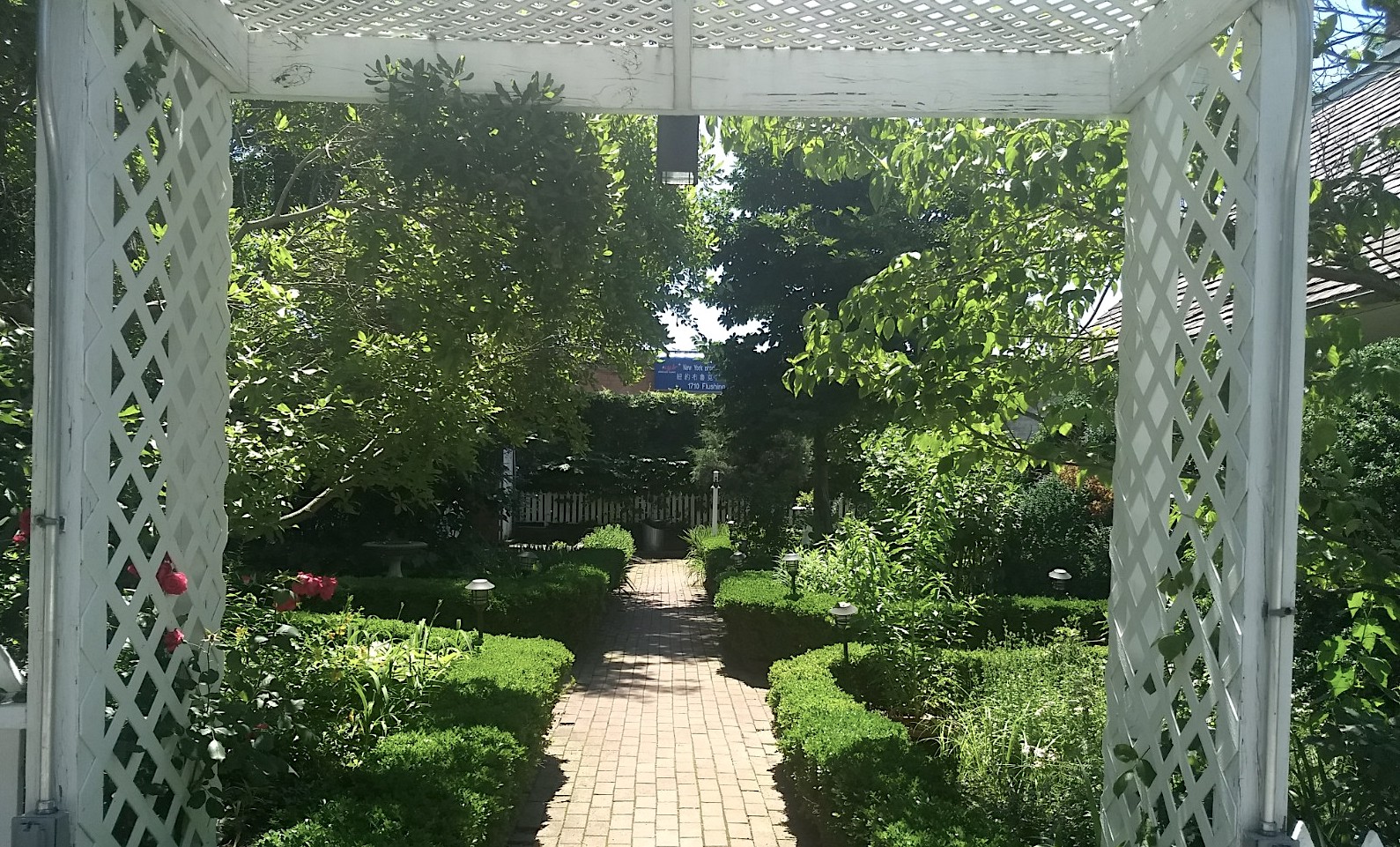
A glimpse into the past
If you want to get a feel for what Ridgewood was like 300 years ago, visit the landmarked Vander Ende-Onderdonk House, a one-time farmhouse that sits on Flushing Avenue. Lovingly restored and cared for by a group of neighborhood volunteers, the well-tended gardens and grounds stand in startling contrast to the low-slung, anything-but-beautiful industrial buildings that have grown up around it. (Open Saturdays and Sundays and for events such as evening candlelight tours; advance booking required.)
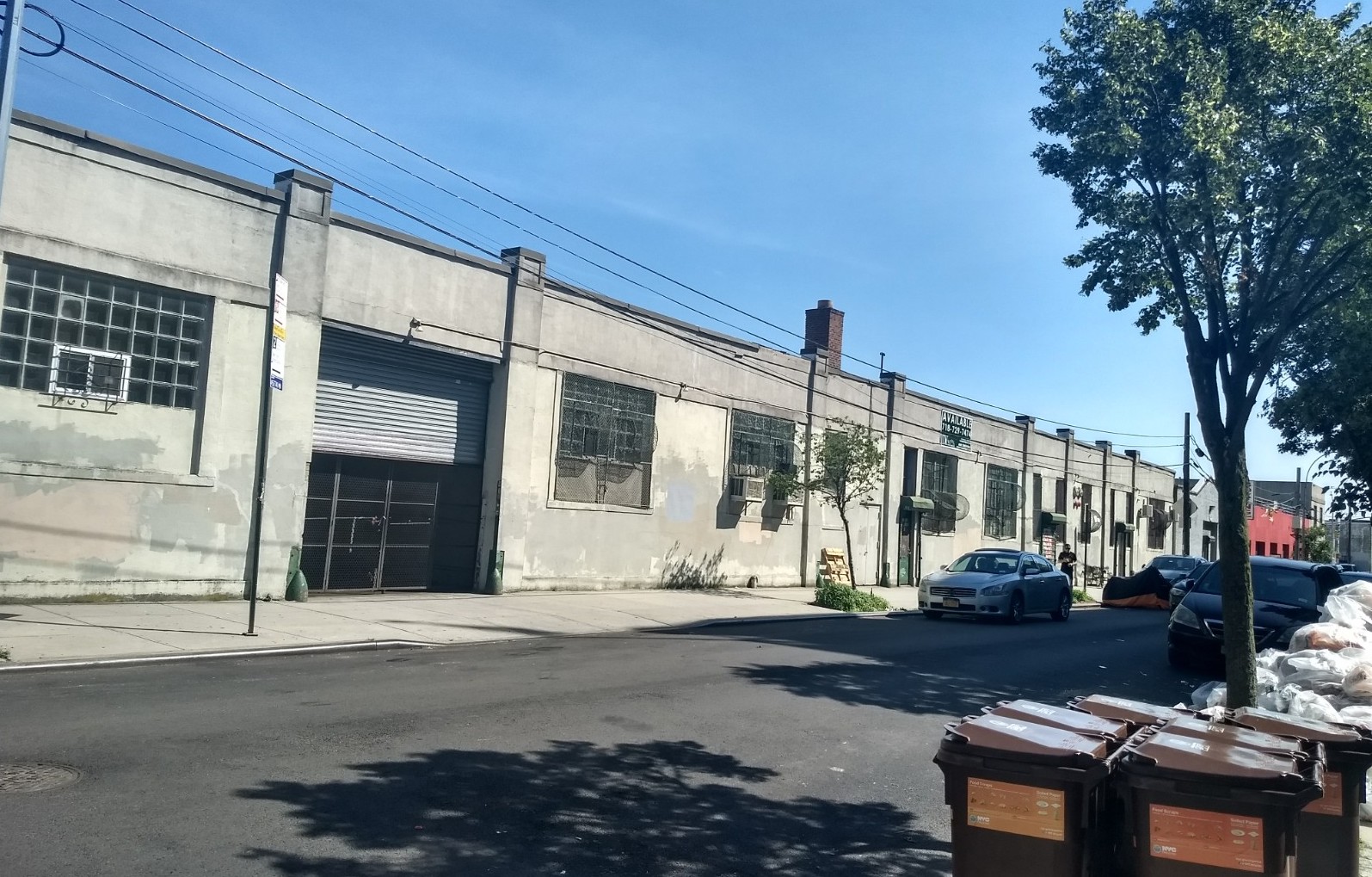
Kerzner says that most of Ridgewood was built in just a few years right around 1910, most of it on spec for the folks who worked at the breweries in what is now Bushwick. Back then it was primarily Germans who moved into the two-family brick houses or the six-family walk ups.
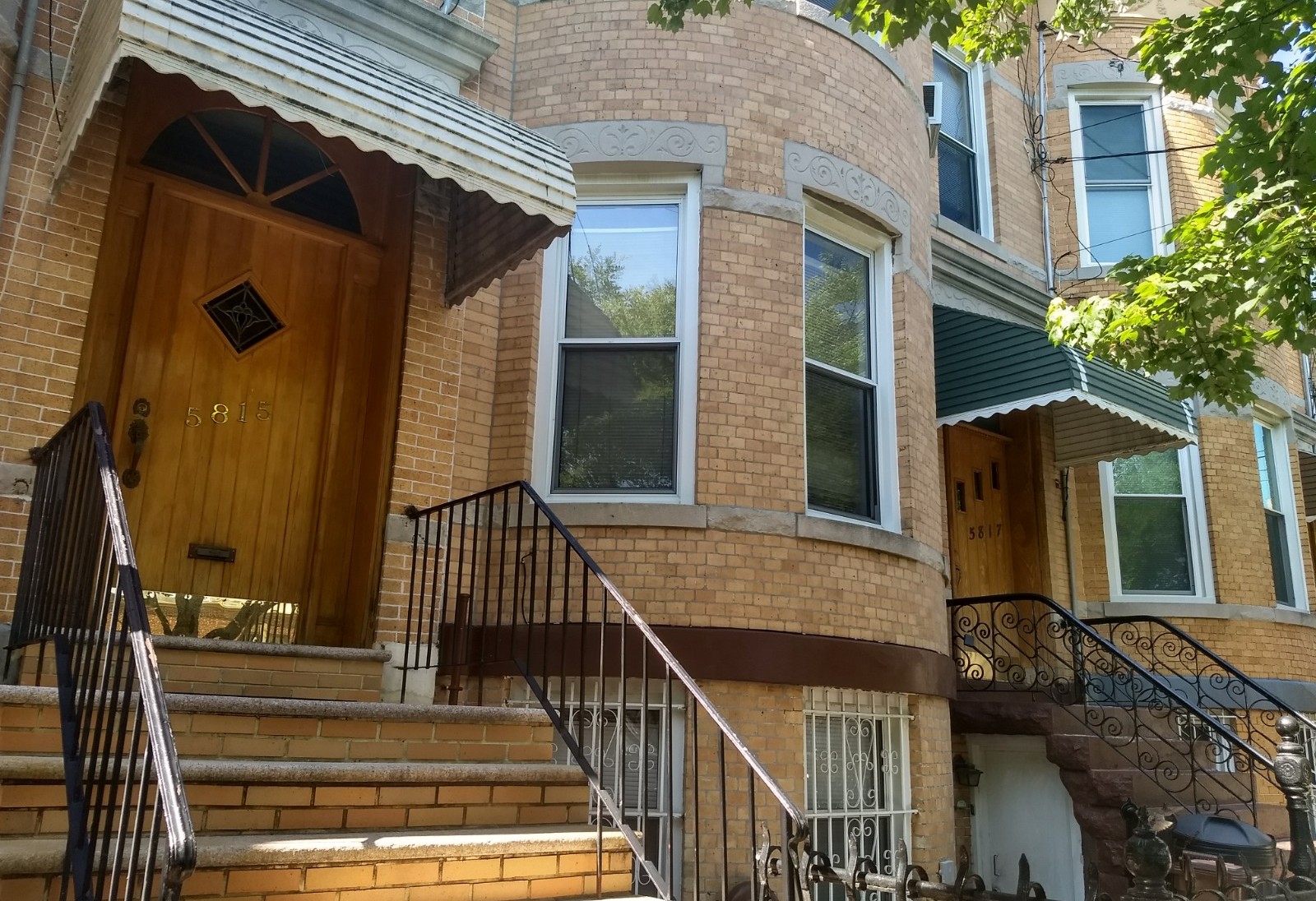
Waves of immigrants
Many of the new immigrants who moved in were German like Kerzner’s grandmother who arrived in 1921. She told him that she chose Ridgewood for three reasons: She could be close to her church (St. Matthias Roman Catholic); she was near the M and L trains to Manhattan; and she was only two blocks away from the shops on Myrtle Avenue.
After World War I, other ethnic groups came to Ridgewood. Gottscheers (Austrians who emigrated to the Balkans in the 14th century), Sicilian, Polish, and Irish immigrants moved in. After World War II, they were joined by immigrants from Romania, other parts of Italy, and Slovenia. In the 1980s, another wave of new arrivals from Poland and Yugoslavia arrived, and more recently, Chinese, Dominicans, Koreans, Ecuadoreans and Egyptians have joined the mix. In the last few years, transplants have relocated from the somewhat less exotic territories of Greenpoint, Bushwick, Williamsburg, and most recently, Manhattan.
“I was expecting people to leave because of the pandemic but the ones that are doing the leaving are the ones who are leaving Manhattan and moving here,” according to Kerzner.
Kendra Lehner moved from “an old and tight apartment in Williamsburg” to a co-living space in Ridgewood. She’s an enthusiastic Ridgewood booster for many reasons and loves its diversity: “This is one of the only places in the world where I can pass a Cuban food truck and a Polish bakery on the same block.”
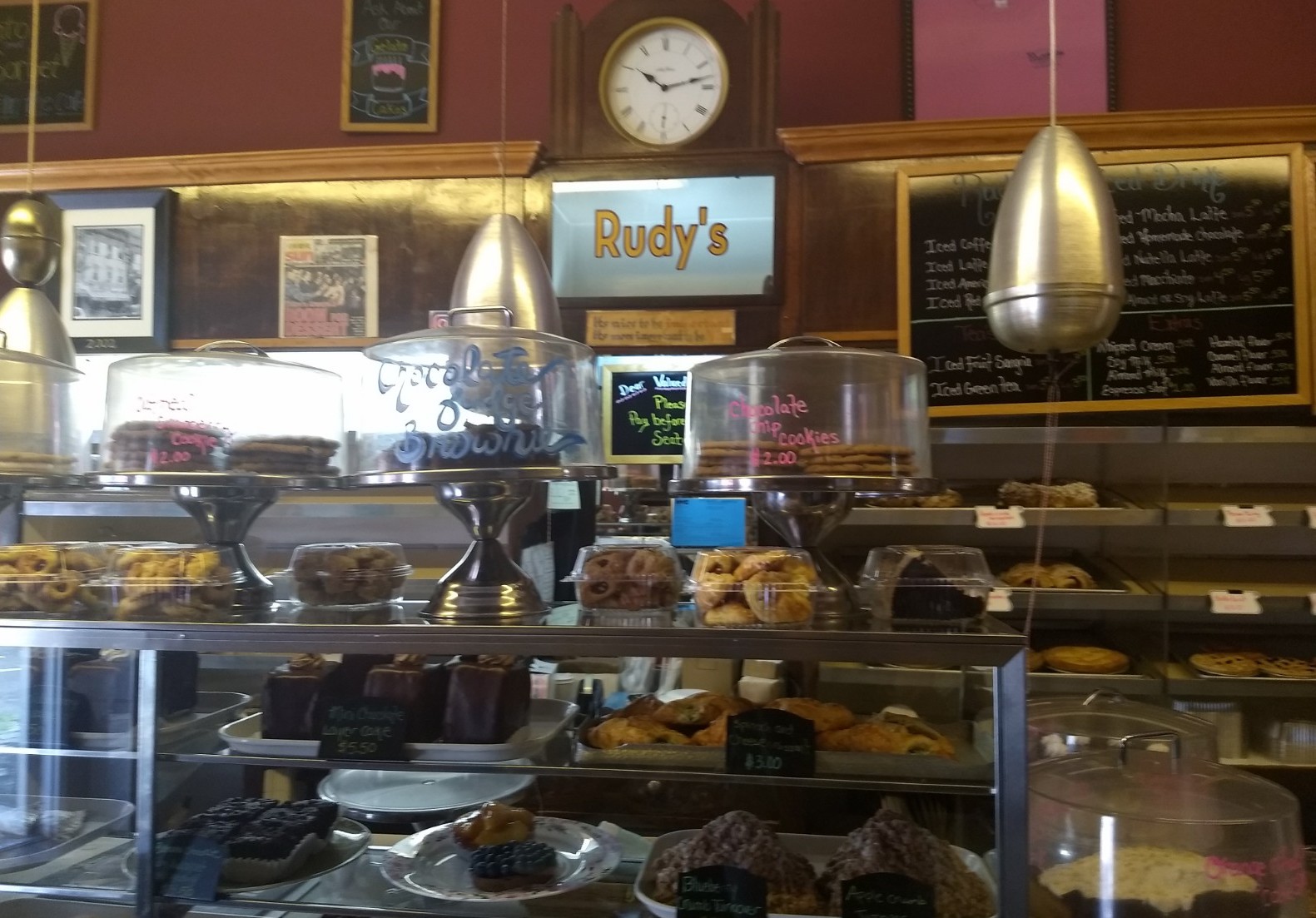
A glimpse of the future
What lies ahead for Ridgewood? There is a very strong community push to preserve as much of the neighborhood as possible in order to maintain its early 20th century feel. Right now nearly 3,000 buildings have been designated as state and federal landmarks and it is possible that, if Kerzner and some of his neighbors have their way, the number will grow with the addition of 500-700 commercial properties along Fresh Pond Road and Myrtle Avenue. They’re optimistic but say that the pandemic has slowed the application process down by about 18 months.
But change is already underway. Erica Zinser, who, like Kerzner, has lived in Ridgewood her entire life, says that she drove down St. Nicholas Avenue and saw that an apartment complex was being built where a diner once stood. “I didn’t realize that was happening. I had no idea!”
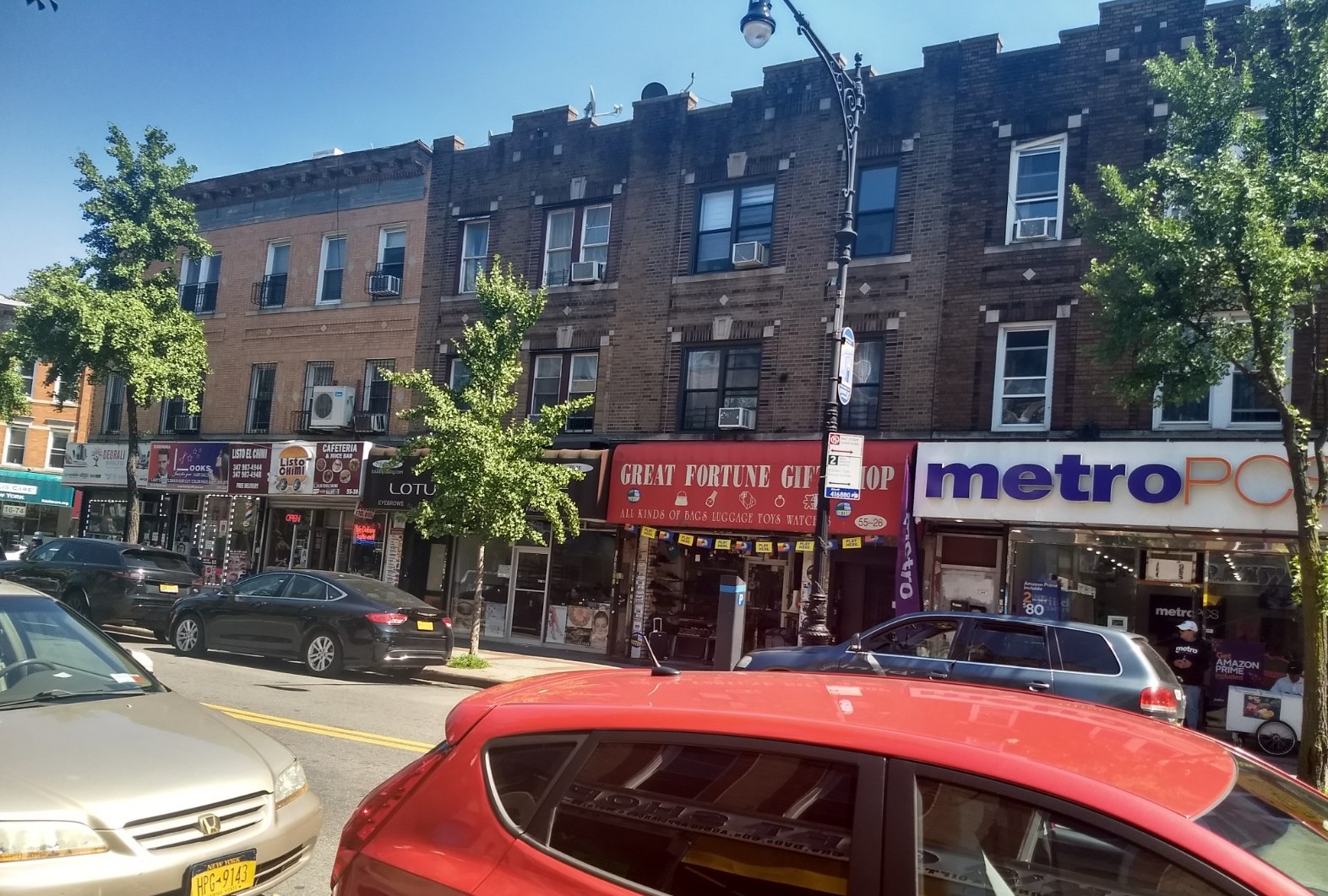
And Steve Monte, another life-long resident, says, “If you had told me 10 years ago that there would be a Belgian beer garden in this neighborhood, I would have said that you were crazy.”
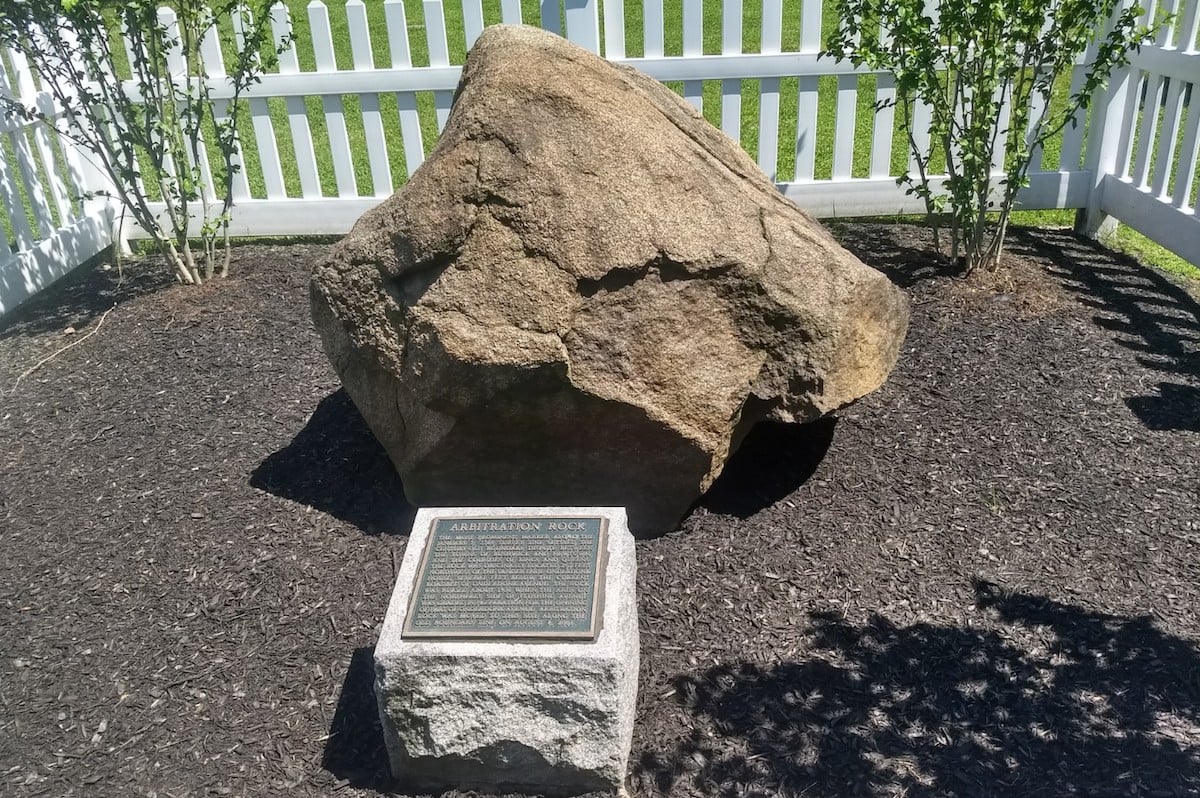
Boundaries: Ridgewood, in the western part of Queens, is surrounded by Bushwick, and East Williamsburg on the west and Maspeth, Glendale and Middle Village on the East. Ridgewood’s border has been even more elastic and contested than those of most NYC neighborhoods.
A boulder that once was part of the Brooklyn-Queens border, known, appropriately, as Arbitration Rock, sits safely behind a white picket fence at the Onderdonk House. The boulder, excavated in 1999, supposedly dates back to 1769. When Brooklyn and Queens became part of New York City in 1898, the boulder lost some of its importance but remains as a tangible reminder of the neighborhood’s earliest history
Median Rent: $2,250, according to StreetEasy
Median Price: $1,200,000, according to StreetEasy.
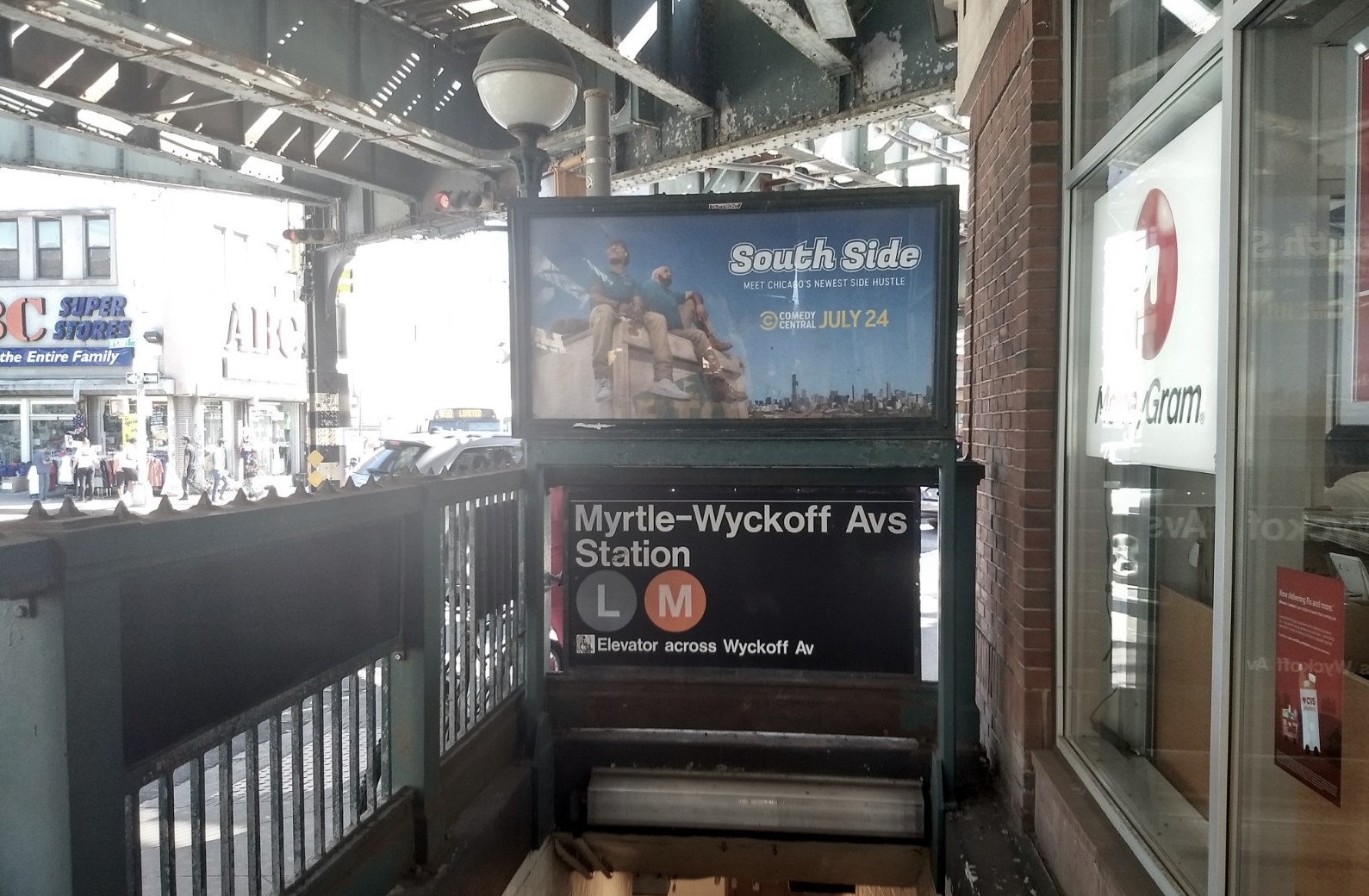
Ridgewood dodged the 'L-pocalypse' scare
“In the pandemic we still have the benefit of the M and L lines from our neighborhood to Manhattan. At worst it’s a 35-40 minute ride to Midtown.” —Paul
“I live in between the Myrtle Wyckoff stop (M and L) and the Halsey stop (L). My roommates and I love the convenience of having more than one subway line to choose from (especially with the L-pocalypse scare). On the weekends, service is normally reduced, so we need to leave an extra 20 minutes earlier to make it on time. This isn’t ideal, but the commute is definitely a tradeoff for all of the space and amenities I can get by living in Ridgewood.
I work in Midtown and can get to work in about 45 minutes door to door, but if I have an extra 10 minutes to spare, I love taking the M to Bryant Park. The train is much less crowded and you get a view of the morning skyline!
We also have easy access to quite a few bus lines (such as the Q55 and the B48) to get to other parts of Brooklyn or Queens.
I don’t have a car but my old roommate did. At times it would take her up to 30 minutes to find a parking spot, which was hard during the NYC winter...my apartment building also has the option of renting your own space for $250 per month…” —Kendra Lehner, rents
“I take the M and the L trains to and from Midtown. The M line is right behind my house. When I worked on Broad Street, I’d get on the train at 8:30 and walk into the door of the bank where I worked by 9:00. There are three bus lines that run on my block and lots of bikes here now. It’s a new bike world.” —Virginia Comber, owner
“I have a car and park it in a garage that I rent around the corner from my house. Rental garage space is very scarce. I used to pay $40 a month, now I pay $200. When we go to the city, I drive to Long Island City, park my car and take the 7 train. We lock our door and, traveling by subway, we can be in our seats at a Broadway show 45 minutes later.” —Steve Monte, owns
“I use the M and L trains with mediocre success, so I usually walk or bike.” —Irina Groushevaia, Bushwick Daily editor, rents
“We have a car but to get to Manhattan we use the subway. To go to some of the restaurants we like that are too far away to walk to, we take Fenix, a local car service. We call them on the phone; they probably have an app but we use the phone.” —Erica Zinser, owns
No more stoop cleaning and socializing on Friday nights
“Years ago, everyone knew their neighbors. The German families would clean their stoops every Friday night and it was a chance for everyone to socialize out on the stoops. Sometimes it takes a while to get to know the new people these days.” —Virginia
“The church used to be the center of community life but not anymore. Growing up here I knew everyone, now I know most. We used to sit on the stoop or visit other stoops. It was pretty solidly German then but now it is very diverse.” —Erica
“Are neighbors friendly? Everyone has been so far. I’ve been here for three years. It’s all very calm and family-oriented.” —Irina
“In nice weather I sit on my stoop so I’ve gotten to know the people who pass by. Because my wife walks the dog, she knows a lot more people.” —Steve
“My neighbors are incredibly friendly. My favorite part of living in Ridgewood is that everyone is so open to meeting new people. My roommates and I have been able to make friends through local businesses—bartenders, baristas and grocery store workers. This is definitely a community-focused neighborhood.” —Kendra
“We stay connected now via zoom. The Community Board office is closed and members who used to meet at one of the churches or one of the schools are meeting on zoom. I think the reality is that more and more people are getting used to it this way and may have started to like it because it’s so convenient.” —Paul
Bulgarian groceries? Egyptian? Polish?
“There used to be lots of German bakeries here but now the only one left is Rudy’s. The owner makes small cakes, cookies and has café seating. She has changed with the neighborhood, which is why she’s still here. Where else will you find Bulgarian groceries in NYC but at Parrot on Myrtle Avenue? For takeout pizza I like Corato’s where I can have a glass of wine while I wait for my pizza to be ready.” —Steve
In the midst of the pandemic, Cafe Plein Air opened on Forest Avenue. It’s amazing and seems to be doing really well. Oysters are a specialty and every day the owner makes a different dessert.” —Angie Dykshorn, 44, rents an apartment in a two-family house
“I love going to Morscher's Pork Store for kielbasa and salamis. I moved to New York from Russia in 2012, and Polish delicacies are very similar to Russian ones. I'd also highly recommend checking out Ridgewood Chocolate, and Foret Wines, for a nice natural vino to complete a beautiful summer meal. For pantry and produce I go to Food Bazaar. I love grabbing breakfast and coffee at Norma's, their biscuits are fresh and to die for, and Son De Cali, a Colombian bakery has lovely baked goods. And I would def recommend Bunker, a Vietnamese restaurant for dinner, (patio open) it's a modern twist on lovely classics. Favorite take out spots? Tasty Thai because their curries are just too good—extra creamy and loaded.” —Irina
“Food Bazaar is the best go-to-spot to get anything you need. Anyone that comes to visit me from outside of New York always says that it’s one of the highlights of their trip. Not kidding. It’s a huge supermarket, but the workers are incredibly friendly, there is always lively music playing, and the food there is truly fresh…There is also no shortage of delis and international food stores in the area for a quick bite or specific dish.
"For eating out, one of my choices are Julia’s, a delicious spot for brunch, a glass of wine, or dinner. Their bottomless coffee and fresh menu items have made this a favorite spot for my friends and me on a Saturday morning. Milk & Pull (curbside pickup) was one of my favorite spots to work, read a book, or meet a friend for a cup of coffee and morning bagel. Imagine a place where hipster beanies, alternative rap music, strong local coffee, and used books all come together in one spot, a place where you can unwind with a new read or trade-in old books for credit over a cup of tea or coffee. Especially perfect on a rainy day. The Yes Studio is a recent find for me! I was looking for yoga studios near my apartment and fell in love with this place. Not only do they have hot yoga, barre, and power flow classes, but they have the cutest cafe downstairs with hanging chairs, pink and green tropical decor, and mouth-watering small bites and drinks (classes online but cafe temporarily closed). And finally, to grab a drink with friends enjoy a plant-based brunch or soak up the backyard, it’s Capy Bara." —Kendra
“We used to have six or seven German restaurants nearby to choose from but now there’s only one, Zum Stammtisch (the name means large table in German) in Glendale. German food is not for July and August but around the winter holidays and for Octoberfest, the place is hopping. All of Fajita Sunrise’s fajitas are good and authentic (currently doing inside dining). When we eat there it always reminds us of the food we like so much in Puerto Vallarta where we go every winter. It’s inexpensive and any of their fajitas are good. On weekends when there’s a mariachi band it’s a bit too noisy for my wife and me so we go during the week.
“Actually a new place opened up during the pandemic. It’s called Rolo’s. It’s a little off the beaten path but the owners have taken great care to restore the facade of the building, bringing it back to the way it looked in 1909 when it was built. They have a $17 prix fixe that’s reasonable and good. There’s a wonderful seating area waiting until they can have seating. They make their own corned beef and pastrami, no preservatives. And a wonderful apple pie for one. I hope they make it! ” —Paul Kerzner, 68, owns
“When we eat out, Antica Trattoria is a small Italian restaurant we like. I order the pasta puttanesca and my husband orders chicken parmesan. But I like to cook big dinners at home for my family every Tuesday and whoever can make it, comes. My five children all live within a half hour from here. We had 52 for Thanksgiving so for that kind of shopping, we drive to BJs and Costco.” —Erica
“I grocery shop at Billy’s Marketplace a full-service grocery store a block away from my apartment. They have a coffee bar and a craft beer bar, in addition to all of the typical produce I buy on a weekly basis. The store is a clean and enjoyable shopping experience. The Food Bazaar is also a viable option for those looking to save money on food or buy in bulk.” —Alison Schaffir, rents in a co-living space
Green space? Residents wish there were more
“We’re about three miles from Forest Park if you are looking for a big green space.” —Virginia
“When my daughter visits, she takes her kids to the newly renovated playground at PS 68. But, I have to admit, we are lacking in green spaces.” —Erica
“I wish we had more green spaces within walking distance, but I still find options for a run, walk, play or just chill out. I’ve run a few times on the Juniper Valley Park Running Track in Middle Village and sometimes I go to Forest Park for my run.” —Kendra
Nightlife on hold—for now
Right now, bars in the area are shuttered, some for good. A few plan to reopen when they can like Nowadays (hoping to open in March), Elsewhere (rooftop to open in spring) and The Deep End (planning to open in spring).
A good place to raise a family
“This is a great place to raise a family. We have a new public school. We don’t have a lot of parks but Grover Cleveland Park, behind the high school, has a playing field with a nice seating area with a view of the Manhattan skyline and nice breeze from the East River.” —Paul
“It was a good place to raise my children. They went to Catholic school. I have a friend who is a teacher at PS 68 who says that for special needs children, you’re better off in the public schools now.” —Erica
“From what I’ve seen, a lot of families have a very comfortable life here.” —Kendra
What are the residents worried about?
“One thing I’m not happy about is that Ridgewood is not affordable for people starting out anymore. I couldn’t buy a house here today. I told our council member that ‘you still have time to change this and get buildings landmarked.’ One supermarket has been torn down and is being replaced by a 300-unit building. We want downzoning. People are having to move out because of rents rising. We had one class level decimated recently when parents moved out.” —Paul
“It is no secret that Ridgewood is an up-and-coming area with new shops, restaurants, apartments, and cafes opening every week. A developer wanted to put in a hyper-luxury apartment building next to the local Food Bazaar, which would have meant the supermarket would have had to shut down for over a year. Residents protested and fought for the supermarket to stay.” —Kendra
“What are we worried about? Gentrification, rezoning, and evictions.” —Irina
“I worry about flooding and the fact that outside developers are buying up property and building higher than the context of the block. And sometimes it gets a bit noisy on our block during the summer.” —Virginia
If you are thinking of moving to Ridgewood
“Take time to get to know the neighborhood and your neighbors. For the first year of living in Ridgewood, I barely explored and always commuted to other parts of Brooklyn or Manhattan to spend time with friends. It was not until recently that I made it a priority to discover areas I loved near me, and I wish I had taken the initiative to make my neighborhood my own sooner. Everyone is also incredibly friendly, so don’t be afraid to get to know your neighbors!” —Kendra
“This is a gem of a neighborhood, rich in culture and amazing food.
Consider it if you can respect a culturally diverse neighborhood.” —Irina
“If you want to move here, buy now. Real estate is still tight. As soon as a house goes up for sale, it’s gone. Prices have gone down a little during the pandemic but not significantly. Borrow if you must, but don’t wait. I bought my house, a two-family bay brick, in 1978 for $35,000. I didn’t dare tell my parents how much it cost so I almost fell over when I got a recent assessment of $1.1 million. If you’re thinking of moving here, it might be a good idea to move into a rental first. I know people who have tried that though and couldn’t stay because the prices were too high. Middle Village used to be considered the high-rent district, now we are.” —Paul
“Walk the neighborhood, check out the transportation, get a feel for how convenient the shopping is, check out the schools and visit a Community Board 5 meeting to find out what’s going on.” —Virginia
You Might Also Like










